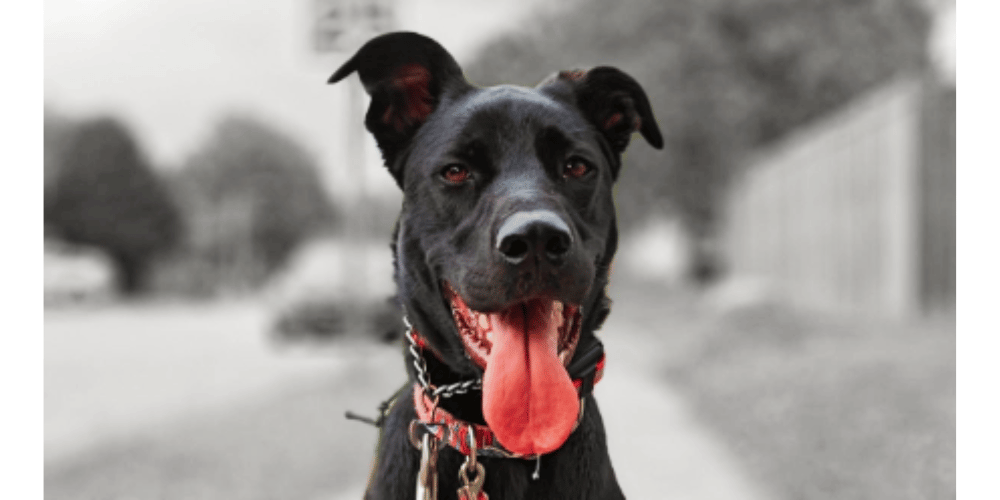As a dog owner, the safety and well-being of your furry friend are always a top priority. Emergencies can happen anytime, and being prepared is crucial. This comprehensive guide will walk you through how to make a dog emergency kit that could potentially save your pet's life.
Key Takeaways:
- Understand the essential items to include in your dog's emergency kit.
- Learn how to handle common emergency situations with the right supplies.
- Know how to keep your dog's medical records and emergency phone numbers handy.

The Essentials of a Dog Emergency Kit
When it comes to emergencies, having a well-stocked pet first aid kit can make all the difference. Start with a sturdy, waterproof container to hold all the items. Your dog's first aid kit should include basic first aid supplies such as gauze, adhesive tape, and antibiotic ointment to address minor injuries and prevent infection.
First Aid Supplies You Can't Skip
Certain first aid items are non-negotiable when assembling your own DIY emergency kit. A digital thermometer is essential to check your dog's temperature, as fever can be a sign of infection. Safety gloves are also crucial to protect yourself and prevent any contamination when treating your dog's wound.
Medications and Treatments
Include activated charcoal in your kit, which can be used to treat poisoning after consulting with a veterinarian immediately or the Pet Poison Helpline. Hydrogen peroxide can induce vomiting in certain situations, but only use it under the guidance of a professional. Antibiotic ointment and styptic powder to stop blood flow are also important for treating cuts and scrapes on your dog's skin or paw pad.

Handling Injuries and Wounds
In the event of an injury, you'll need to know how to flush wounds to clean them and absorb blood with clean gauze or bandages. A slip leash can double as a makeshift muzzle if your dog is in pain and at risk of biting. Instant cold packs can reduce swelling and provide relief for sprains or strains.
Nutrition and Hydration
Your dog's emergency kit should contain at least a three-day supply of dog food and water. Pack a collapsible food and water bowl for convenience. A water bottle or a space blanket can help maintain your pet's comfort and regulate their temperature in stressful situations.
Restraint and Transportation
A spare leash and extra leash are vital for controlling and transporting your dog safely. A slip leash is particularly useful as it can be quickly put on, especially if your dog's regular collar or harness is lost or damaged. A collapsible bowl will ensure you can provide water during transportation.
Comfort and Care
To aid in the healing process and ensure your pet's comfort, include a soft blanket or a space blanket in your kit. This can help keep your dog warm and secure, which is especially important if they are in shock or have been exposed to cold temperatures.

Seasonal Considerations for Your Dog's Emergency Kit
When assembling a dog first aid kit, it's crucial to consider the changing needs of your furry friend with the seasons. In the sweltering summer months, include extra water to prevent dehydration and a cooling vest or cold pack to ward off heatstroke. For their dog paws, consider protective booties to shield them from hot pavements or icy conditions. Conversely, winter demands a blanket to keep your pet warm if stranded, and pet-safe ice melt to protect their paws from harsh chemicals. Adapting your DIY pet emergency kit to the season ensures your dog's safety and comfort year-round.
As seasons change, so do potential hazards. Springtime might bring about more outdoor adventures, increasing the risk of ticks and other pests, so include tick removers and flea prevention in your kit. In autumn, be mindful of the dangers of antifreeze and rodenticides, often used more frequently during this time. A well-thought-out dog first aid kit accounts for these seasonal risks, ensuring you're prepared to protect your dog's skin and overall health no matter the month. Remember, a pet owner's vigilance is as crucial as the contents of the emergency kit.
Special Care Items for Specific Dog Breeds
When assembling your dog's first aid kit, consider the unique needs of your dog's breed. For instance, brachycephalic breeds like Bulldogs and Pugs may require special attention to their respiratory systems. Including a soft muzzle that fits well around your dog's mouth can help prevent bites during stressful situations without restricting breathing. Additionally, breeds with prominent eyes, such as Shih Tzus or Pekingese, are prone to eye injuries. Make sure to have saline eye solution and gauze pads to address any issues with your dog's eyes gently and effectively.

Certain breeds are also predisposed to skin issues; for example, dogs with wrinkles or folds in their skin, like Shar-Peis, may need antiseptic wipes or creams to prevent infections in those areas. Similarly, breeds with long ears, such as Basset Hounds, might benefit from having ear cleaning solutions and cotton balls in their emergency kit. Always tailor the contents of your dog's first aid kit to their specific needs, ensuring their safety and your peace of mind. Sure, here are two new sections for the article:
Monitoring Your Dog's Health in Emergencies
When emergencies strike, keeping a close eye on your dog's health becomes paramount. Monitoring your dog's temperature can provide critical information about their condition. Most dogs have a normal temperature range between 101 and 102.5 degrees Fahrenheit, and a pet-specific thermometer should be a staple in your dog's first aid kit. If your dog's temperature falls outside this range, it could be a sign of shock, heatstroke, or hypothermia, requiring immediate attention.
In addition to temperature, regularly checking your dog's eyes, mouth, and skin can reveal hidden issues. For instance, pale gums can indicate blood loss or shock, while redness in the eyes might suggest an allergic reaction or injury. A dog's skin should be elastic and hydrated, so if you notice any abnormalities, such as excessive dryness or wounds, it's essential to address them quickly. Keeping an eye on these health indicators can make a significant difference in managing your pet's comfort and safety during an emergency.

Traveling with Your Dog's Emergency Kit
When you're on the go, having a dog's first aid kit tailored for travel is crucial. It's not just about being dog safe; it's about being prepared for any hiccup on the road. Start by ensuring your kit is compact yet complete, containing essentials like bandages, antiseptics, and tweezers. Remember to include a copy of your dog's medical records, as these can be vital in case you need to visit a vet away from home. A well-prepared kit can make all the difference when you're far from your usual resources.
Moreover, consider the specific needs of your dog while traveling. If your dog's skin is sensitive, pack hypoallergenic wipes and ointments. For dogs prone to motion sickness, include medications and familiar dog's food to help settle their stomach. Keep the kit accessible at all times, and if you're traveling by plane, check the airline's regulations to ensure your dog's emergency kit complies with their guidelines. By being prepared, you can ensure that both you and your furry friend have a safe and enjoyable trip.
Updating Your Dog's First Aid Kit
When it comes to your dog's health, staying current is crucial. Regularly checking and updating your dog's first aid kit ensures that you're prepared for any situation. Start by examining all the items for expiration dates, especially medications and treatments. Replace anything that's outdated or running low. It's also a good idea to reassess your dog's needs annually, as they may change with age or health conditions. This might mean adding joint supplements for older dogs or antihistamines if you've discovered new allergies.

Furthermore, consider the dynamic nature of your dog's lifestyle. If you've recently taken up hiking with your pet, you might need to add items specific to outdoor adventures, such as tick removal tools or a sturdy pair of tweezers. Always keep your dog's medical records updated and stored in a waterproof container within the kit. This should include vaccination records, a recent photo of your dog in case they get lost, and any pertinent medical history that could be vital in an emergency.
Comfort Measures in Canine Emergencies
In any emergency, your pet's comfort is just as important as addressing their physical needs. A scared or stressed dog can exacerbate their condition, so include items that can help soothe them. A familiar blanket or toy can provide a sense of security and help calm your dog's nerves. Additionally, practice using a muzzle; even the gentlest dog may snap when in pain. Familiarizing your dog with a muzzle before it's needed can prevent added stress in a tense situation.
It's also essential to be mindful of your dog's skin and paws. Include protective booties in your kit to guard against rough terrain or hot pavement, and consider adding a gentle, pet-safe skin cream to treat minor irritations before they become a bigger issue. For dogs prone to dry or cracked pads, this can be a lifesaver. Remember, a calm dog is easier to treat, and your demeanor can greatly influence your pet's comfort level, so stay composed and reassuring throughout any emergency.
Emergency Response Training for Pet Parents
Knowing how to respond in an emergency is just as important as having a well-stocked dog's first aid kit. Consider enrolling in a pet first aid course to learn how to properly clean a dog's wound, perform CPR on a dog's mouth, and check a dog's temperature. These skills can be lifesaving and will empower you to act confidently should an emergency arise. Many local organizations and online platforms offer courses specifically designed for pet parents, making it easier than ever to get trained.

In addition to formal training, practice regular health checks on your pet to become familiar with their normal condition. This way, you'll be more likely to notice if your dog's eyes are showing signs of distress or if their behavior is off. Keep a thermometer handy to monitor your dog's temperature, which can indicate illness or infection. By combining knowledge with practical skills, you'll be well-equipped to keep your dog safe and provide pet's comfort during any unexpected situations.
Dietary Needs and Managing Vomiting
During an emergency, maintaining your dog's nutrition is crucial, but it's also important to be prepared for potential digestive issues. A dog's food should be easily digestible and familiar to prevent gastrointestinal upset. In your emergency kit, include a few days' supply of your dog's regular food, as sudden changes in diet can lead to stress and digestive problems. If your dog vomits, it's important to withhold food for a few hours and provide small amounts of water to prevent dehydration.
If vomiting persists, it could be a sign of something more serious, and you should consult a veterinarian as soon as possible. In your dog's medical records, note any food allergies or sensitivities, and ensure that anyone who might care for your dog is aware of these. By managing your dog's diet and being prepared for issues like vomiting, you can help ensure their well-being even when the unexpected happens.
Managing Common Canine Emergencies
In the unfortunate event that your dog encounters a medical emergency, being prepared can make all the difference. For example, if your dog vomits, it's crucial to have materials on hand to clean up the mess safely and to monitor your pet for signs of dehydration or further illness. Keep a supply of your dog's food and water in the kit, as maintaining their regular diet can help prevent additional stress on their system. Additionally, knowing how to take your dog's temperature and what the normal range is can help you assess their condition more accurately.

For injuries such as a dog's wound, having the right supplies to clean and protect the wound until you can reach an emergency animal hospital is vital. This includes antiseptic wipes, antibiotic ointment, and bandages specifically designed for a dog's skin. In case of head trauma or other serious injuries, it's essential to have a plan for safely restraining and transporting your dog to a veterinary clinic. A sturdy carrier, blanket, or stretcher can be invaluable in these situations, ensuring your pet's comfort and safety while you seek professional care.
Tech and Apps for Emergency Preparedness
In today's digital age, dog owners can leverage technology to enhance their emergency preparedness. There are several apps designed to store your dog's medical records and provide step-by-step instructions for dealing with emergencies. These apps can be a lifesaver, offering quick access to your dog's medical history and a list of nearby emergency animal hospitals. Additionally, consider including a USB drive in your DIY dog emergency kit with digital copies of your pet's records for easy access by veterinary professionals.
Moreover, technology can help monitor your dog's temperature and vital signs in an emergency. Compact, pet-friendly devices can be included in your first aid kit supplies to keep track of your dog's health status. For instance, a digital thermometer designed for a dog's mouth or ear can provide accurate readings to help you assess their condition. In the unfortunate event of your dog becoming lost, a GPS tracker attached to their collar can be invaluable in reuniting you with your pet. Embracing these tech tools can significantly enhance a pet owner's ability to maintain their pet's comfort and safety in any situation.

Record Keeping
Keeping your dog's medical records up to date and readily available is essential. This includes a list of emergency phone numbers, such as the closest emergency vet, the Pet Poison Helpline, and your local veterinarian. A few items like a notepad and pen can be helpful for recording any symptoms or treatments administered.
Emergency Contacts and Information
Always have a list of emergency phone numbers, including your local veterinarian, the closest emergency vet, and the Pet Poison Helpline. This ensures that you can quickly seek professional advice or assistance in an emergency situation.
Tools and Miscellaneous Items
Don't forget to include practical tools like tweezers for removing splinters or ticks, scissors for cutting bandages, and duct tape for various quick fixes. A flashlight with extra batteries can be invaluable if you find yourself in a low-light situation.

Preparing for Specific Emergencies
Understanding how to handle specific emergencies, such as allergic reactions or if your dog vomits, is crucial. Include items like antihistamines (after consulting with your vet) and materials to clean up vomit safely. Knowing the proper use of each item in your kit is just as important as having them.
Training and Knowledge
Having the right supplies is only part of the equation. Pet owners should also be knowledgeable about basic first aid techniques. Consider taking a pet first aid course to learn how to use the items in your dog first aid kits effectively.
Customizing Your Kit
While there are general items that all dog first aid kits should have, consider your dog's specific needs. For example, if your dog has a known health condition, make sure to include any prescribed medications or special supplies they may need.
Maintenance and Upkeep
Regularly check the contents of your dog's emergency kit to ensure everything is in working order and has not expired. Replace any items that have been used or are no longer safe to use, such as expired medications or damaged tools.

Summary
Creating a comprehensive dog emergency kit is a vital step for all pet parents. It should include first aid supplies, medications, tools for restraint and transportation, nutrition and hydration essentials, comfort items, and up-to-date medical records. Regular maintenance of the kit is crucial to ensure its readiness in an emergency. By being prepared, you can provide the best possible care for your dog when it matters most.
FAQ Section
Q: How often should I check and update my dog's emergency kit? A: It's recommended to review and update your dog's emergency kit at least every six months. Check for expired items, replenish used supplies, and consider any changes in your dog's health that may require different items.
Q: Can I use human first aid supplies for my dog? A: While some human first aid supplies can be used for dogs, it's important to consult with your veterinarian before doing so. Some human medications and treatments can be harmful to dogs.
Q: What should I do if my dog has an allergic reaction? A: If your dog shows signs of an allergic reaction, such as swelling or difficulty breathing, contact your veterinarian or the closest emergency vet immediately. Having antihistamines in your kit, as recommended by your vet, can help manage the reaction until professional help is available.
Thank you for visiting LegitLists we hope this helps you make a legitimate choice!






